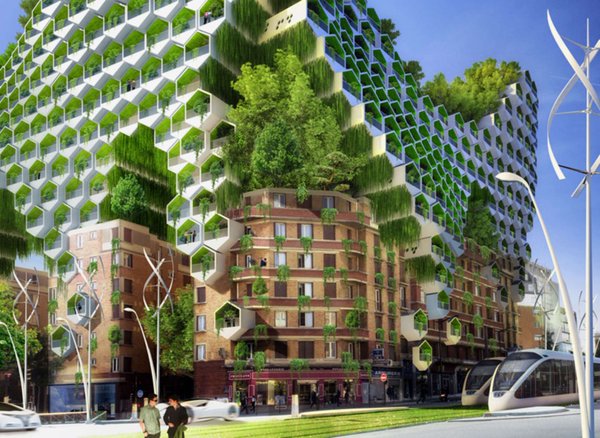The main objective in creating greener buildings is to reduce the structure’s impact on the environment and on human health, for the entire lifetime of the building. This can be done by increasing energy efficiency and reducing waste, pollution and degradation of the environment. In addition, the efficient use of resources to reduce the consumption and waste of building materials is an important principle. A sustainable building should also be designed to protect the health of its inhabitants and, in the case of commercial buildings and office blocks, to increase employee productivity. By reducing energy use, there is evidence that the operating costs of sustainable buildings become cheaper.
Conventional building projects previously consumed space on what became known as “greenfield” sites. These were usually vast stretches of disused suburban or rural land that were purchased or recovered from common use for the building of housing estates and commercial industrial or retail parks. Such projects had a devastating effect on the local environment, decimating wildlife habitats and bringing pollution to clean-air areas. With the rise of green building practices, it has become preferable, not to mention more publicly acceptable, to choose other sites. Urban infill sites are patches of land in towns or cities, perhaps where another building has been demolished, due to age or damage, that can be redeveloped. Brownfield sites, where land reclaimed from disused industrial or commercial developments is reused, are also popular.
In green construction processes, there is an emphasis on the use of renewable resources. For example, a building can use passive or active solar energy or hydro energy for heating and hot water. The use of gravel or permeable concrete instead of concrete or asphalt can help to replenish ground water. There is also a rise in the use of natural wood from renewable sources as a building material. A building’s use of water is also a key factor in its environmental impact.
Water sources are usually drawn from the natural groundwater that lies beneath the surface of the land. In many cases, this natural source becomes depleted much faster than it is able to replenish itself when there is a great demand placed upon it. Therefore, it has become important that buildings make use of alternative water sources for heating, hot water and sewerage disposal throughout their life cycles, to reduce use and conserve water supplies. This can be achieved by the installation of specialized plumbing systems that recycle water from toilet flushing and conserve water use through facilities such as low-flow toilet flushes or shower heads. The built environment has an impact on the community and with green building processes this impact can be made much more positive.



